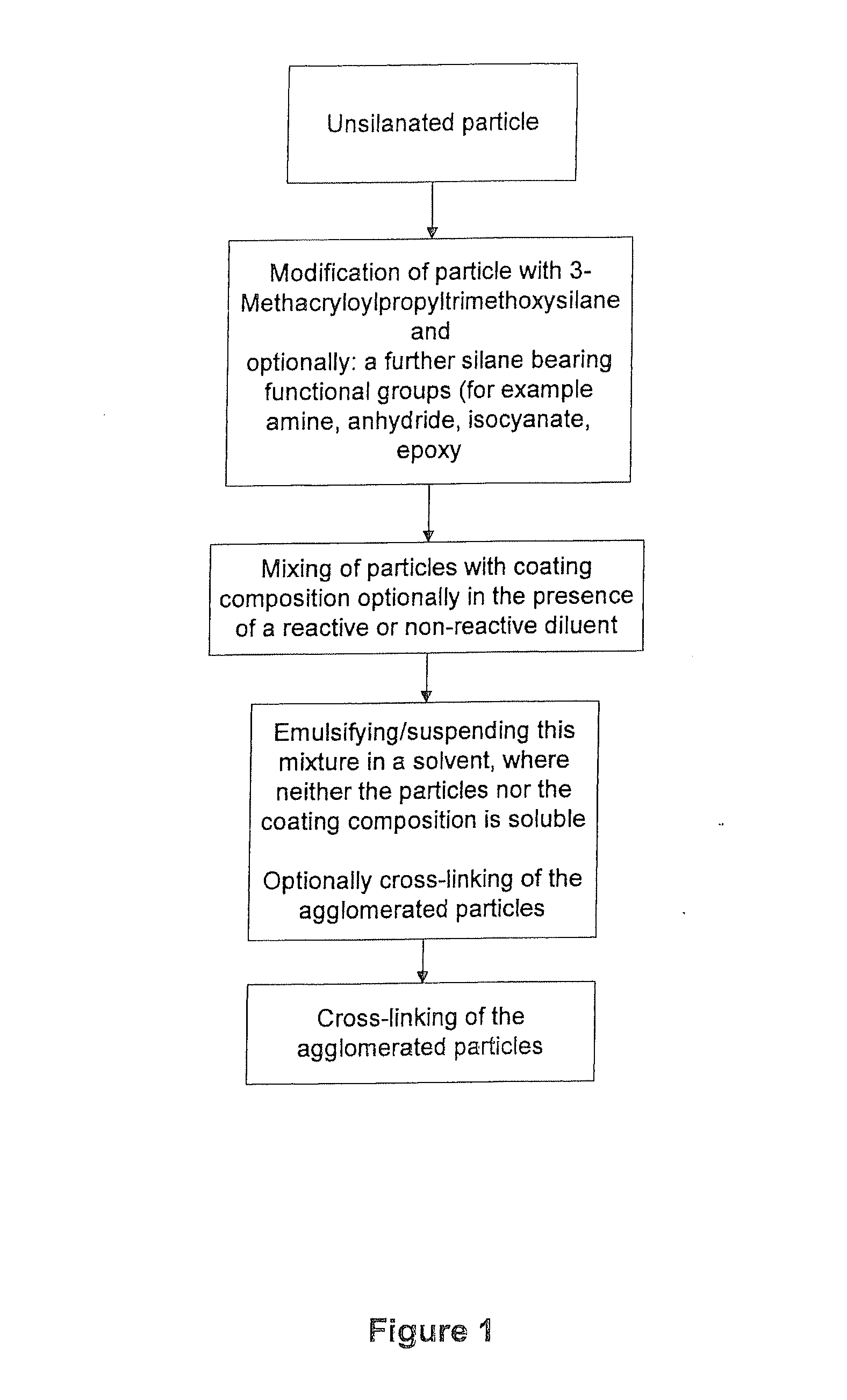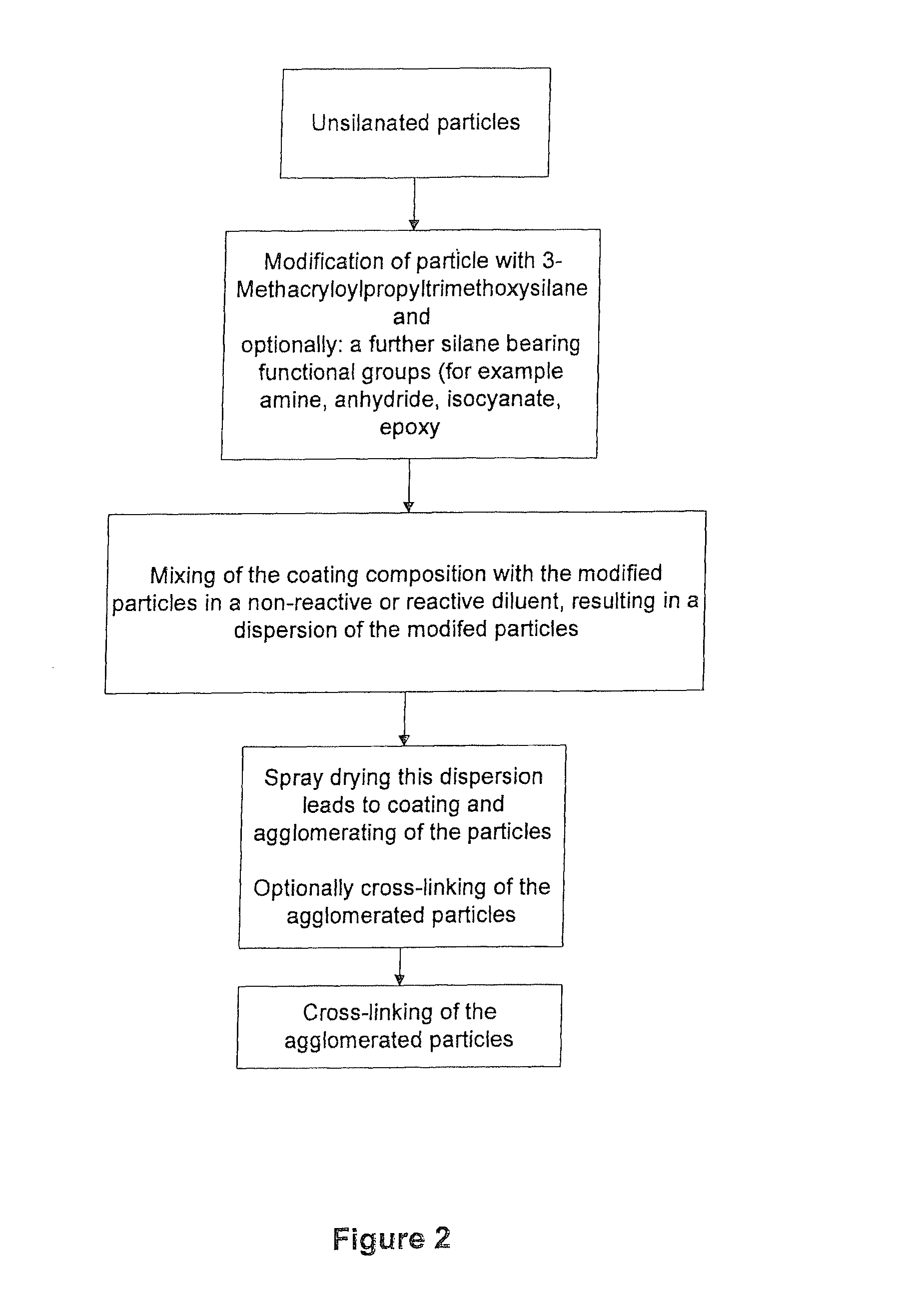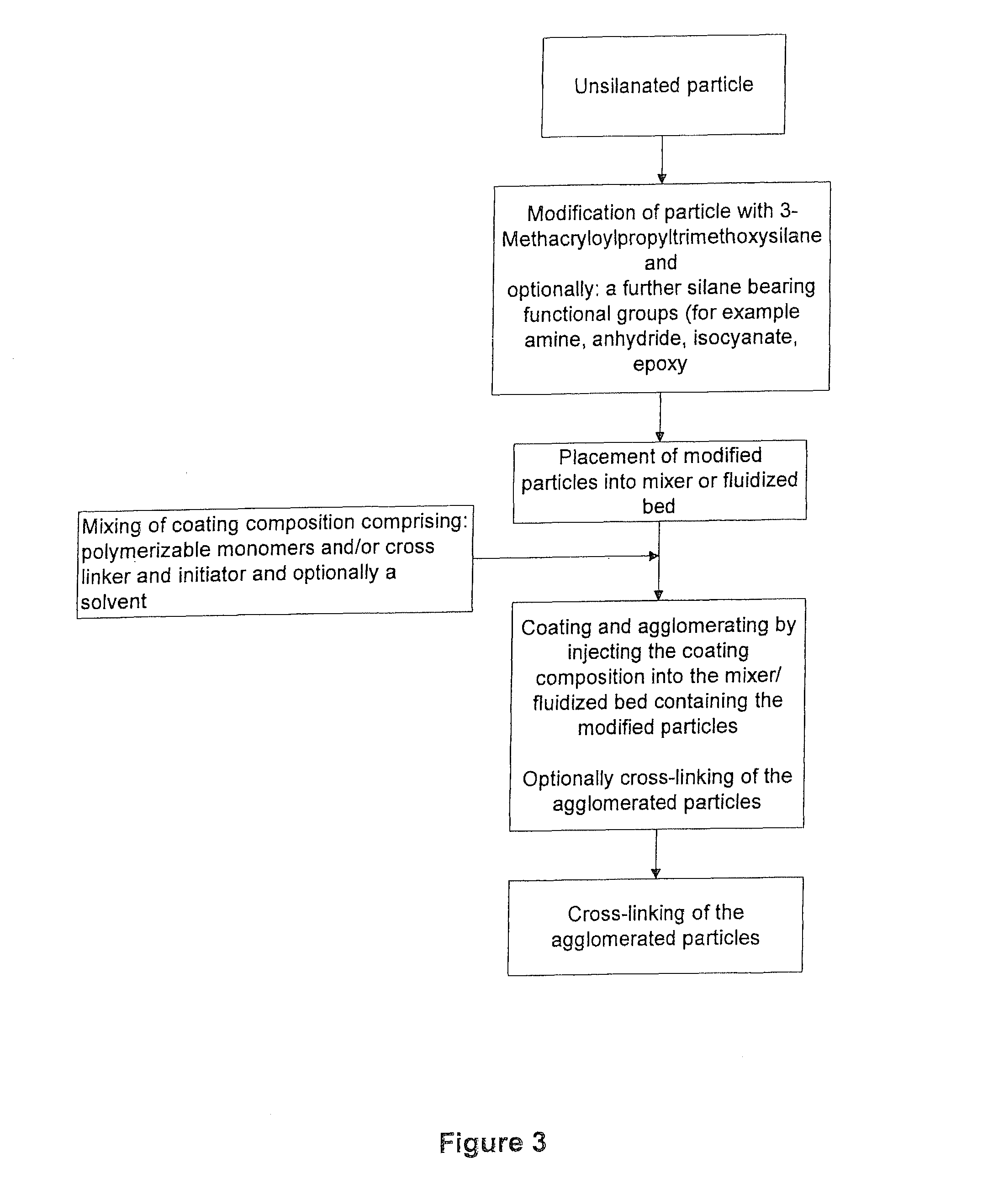Composite filler particles and process for the preparation thereof
a composite filler and particle technology, applied in the field of composite filler particle preparation, can solve the problems of secondary caries, reduced longevity of repair, gap formation between restorative composite and tooth, etc., and achieve excellent viscosity and workability of dental composition, high filler loading, and efficient and effective preparation of composite filler.
- Summary
- Abstract
- Description
- Claims
- Application Information
AI Technical Summary
Benefits of technology
Problems solved by technology
Method used
Image
Examples
example 1
Coating of a Particulate Filler
[0138]112.5 g of a strontium-aluminum-sodium-fluoride-phosphorous-silicate glass having a particle size D50=0.7 μm are dispersed in 200 mL ethanol at room temperature for 15 minutes in an ultrasound bath. 1.6 mL (1.6 g) (3-aminopropyl)trimethoxysilane dissolved in 10 mL ethanol, and 1.5 mL (1.4 g) 3-(trimethoxysilyl)propylmethacrylate, dissolved in 10 mL ethanol are added simultaneously to the glass suspension. During the addition, suspension is treated with ultrasound. After the addition is complete, the suspension is treated for additional 30 minutes with ultrasound at room temperature. Subsequently, the solvent is removed in vacuo and the residue is dried for 24 h at 100° C. for providing a coated particulate filler. The coated particulate filler is the sieved by using a 180 μm sieve. The median particle size D50 of the coated particulate filler was determined to be D50=0.74 μm.
[0139]In a beaker containing about 50 mL water, a portion of about 50 mg...
example 2
Aggregation of Coated Particulate Filler
[0141]70 mg isophoren diamine (5-amino-1,3,3-trimethylcyclohexanemethylamine) are dissolved in 2.5 mL tetrahydrofuran (THF). 280 mg bisphenol-A-diglycidyl ether are dissolved in 2.5 mL THF. Both solutions are mixed with 5.00 g of the coated particulate filler and the solvent is removed in vacuo (50 mbar) at 30° C. The resulting granulation of the coated particulate filler is kept in a sealed container for 5 hours at 70° C. Subsequently, about 1.5 g of the resulting granulation is added to 10 mL of ethanol and treated for 1 h with ultrasound. The median particle size of the composite filler particles was determined to be D50=3.3 μm.
example 3
Aggregation of Coated Particulate Filler
[0142]77 mg TCD-diamin (3(4),8(9)-Bis-(aminomethyl)-tricyclo[5.2.1.02.6]decan) are dissolved in 2.5 mL THF. 280 mg bisphenol-A-diglycidyl ether are dissolved in 2.5 mL THF. Both solutions are mixed with 5.00 g of the coated particulate filler and the solvent is removed in vacuo (50 mbar) at 30° C. The resulting granulation of the coated particulate filler is kept in a sealed container for 5 hours at 70° C. Subsequently, about 1.5 g of the resulting granulation is added to 10 mL of ethanol and treated for 1 h with ultrasound. The median particle size of the composite filler particles was determined to be D50=4.5 μm.
PUM
| Property | Measurement | Unit |
|---|---|---|
| median particle size | aaaaa | aaaaa |
| median particle size | aaaaa | aaaaa |
| median particle size | aaaaa | aaaaa |
Abstract
Description
Claims
Application Information
 Login to View More
Login to View More - R&D
- Intellectual Property
- Life Sciences
- Materials
- Tech Scout
- Unparalleled Data Quality
- Higher Quality Content
- 60% Fewer Hallucinations
Browse by: Latest US Patents, China's latest patents, Technical Efficacy Thesaurus, Application Domain, Technology Topic, Popular Technical Reports.
© 2025 PatSnap. All rights reserved.Legal|Privacy policy|Modern Slavery Act Transparency Statement|Sitemap|About US| Contact US: help@patsnap.com



